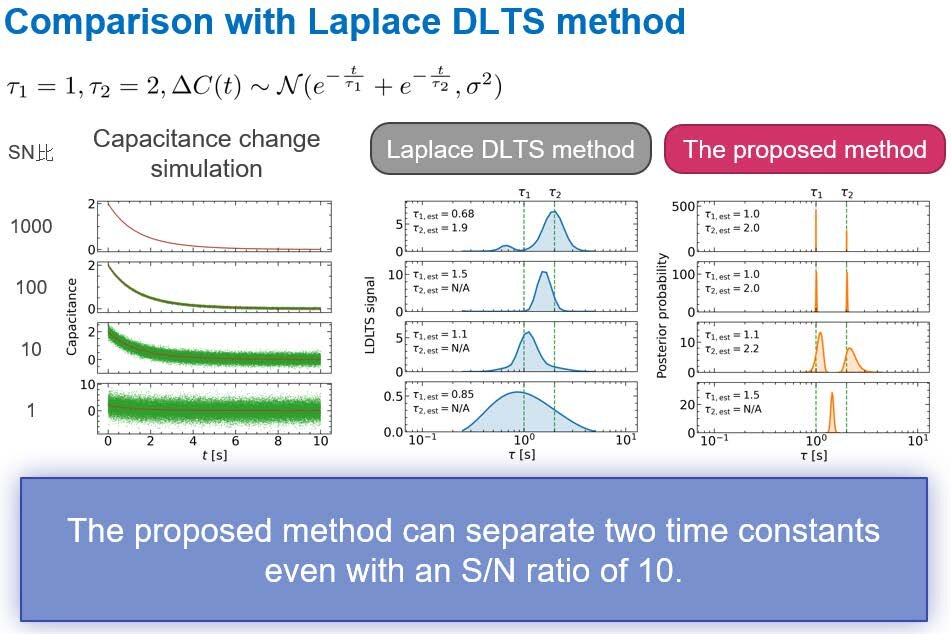Available Technologies
New Method to Dramatically Improve the Resolution of DLTS
By incorporating the new software into deep-level transient spectroscopy (DLTS) system, deep level separation becomes possible even in environments with a low S/N ratio.
Background
Deep levels in semiconductors affect semiconductor properties and device characteristics, making the precise determination of energy levels extremely important. Deep-Level Transient Spectroscopy (DLTS) has been widely used as a method for evaluating deep levels by measuring transient capacitance changes. Among several types of DLTS, Laplace DLTS excels at separating and evaluating multiple levels with similar time constants. However, there was the challenge of requiring a high signal-to-noise (S/N) ratio to achieve high time constant resolution.
Description and Advantages
Aiming to reduce the S/N ratio required to isolate and evaluate multiple deep levels, the invention provides for the new software that applies a new statistical estimation method to transient capacitance analysis.
➢ Separation of deep levels achievable with a S/N ratio of less than 1/100 comparing to normal LDLTS, making it effective for the separation and evaluation of levels with similar time constants (Fig. 1).
➢ No need to modify the existing hardware configuration since the output data of capacitance changes obtained from the DLTS system is processed by software.
➢ The fast measurement achievable by the software integration, taking only a few minutes.

Fig. 1 Comparison of deep level resolution between conventional LDLTS
and the proposed method with the software
| Development Status |
✓ Confirmed effective through simulation ✓ Seeking partners to trial the software on devices. |
|---|---|
| Offer | • Patent License • Option for Patent License |
| Related Links | View PDFView in Japanese |
Have you found what you were looking for?
- Interested in a particular research activity
- Cannot find the information
- Have questions on how to utilize research results
Feel free to contact us and get answers to your questions.
Inquiry- TLO-KYOTO
- Available Technologies
- New Method to Dramatically Improve the Resolution of DLTS
3rd Floor, International Science
Innovation Building, Kyoto University
Yoshidahonmachi, Sakyo-ku, Kyoto
606-8501 JAPAN


